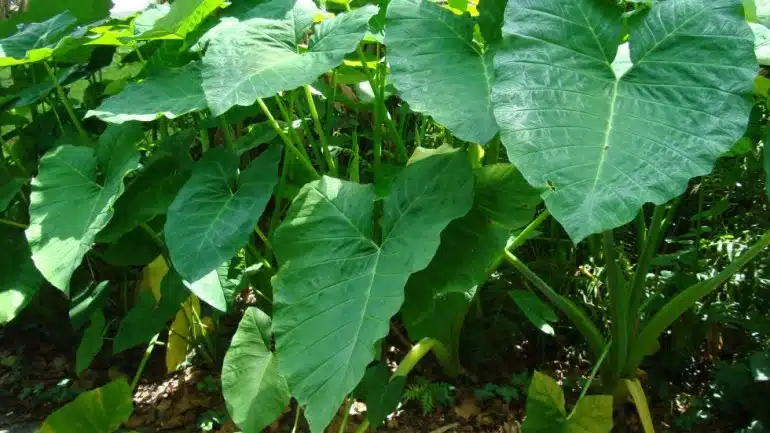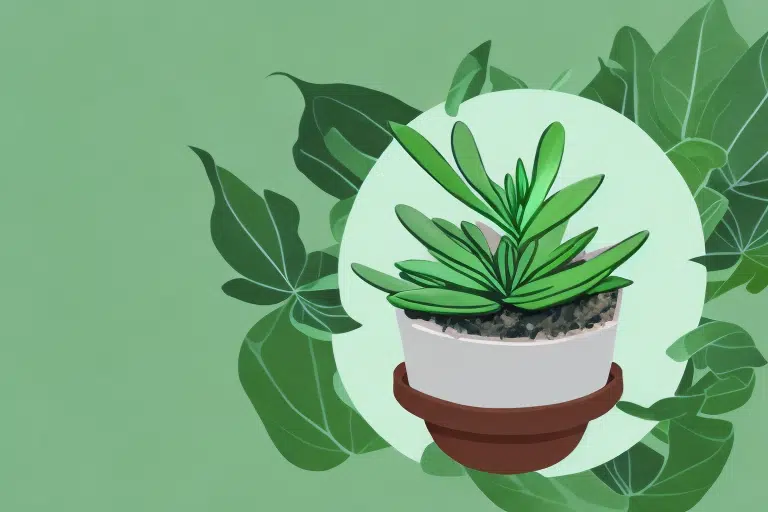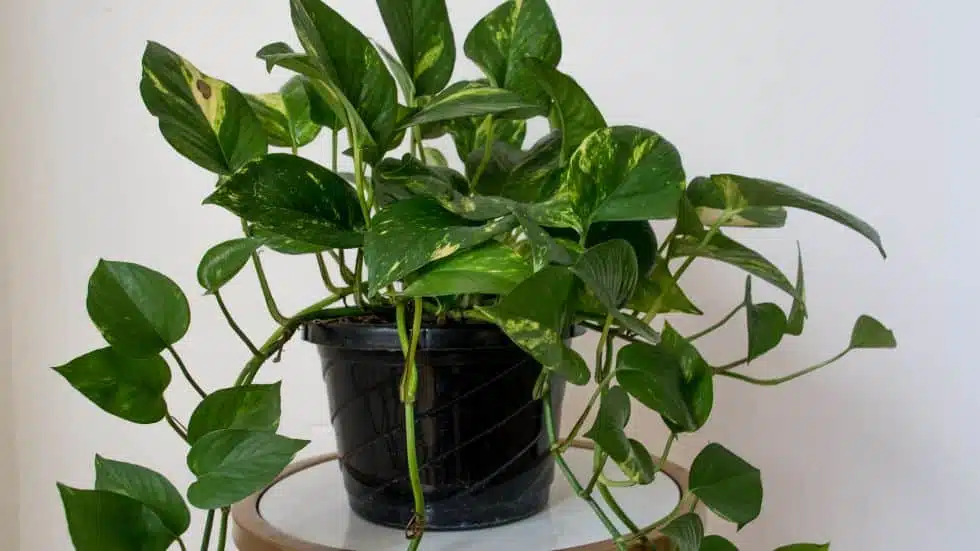The Elephant Ear Plant, also known as Alocasia, is a stunning tropical plant that can add a touch of exotic beauty to any indoor or outdoor space. In this comprehensive guide, we will explore the various aspects of caring for an Elephant Ear Plant, from understanding its origin and characteristics to providing essential care guidelines and troubleshooting common problems. So, let’s dive in and learn how to keep your Elephant Ear Plant thriving!
Understanding the Elephant Ear Plant
The Elephant Ear Plant, scientifically known as Alocasia, is a captivating plant that has captured the attention of plant enthusiasts worldwide. Originating from the tropical regions of Southeast Asia, this plant belongs to the Araceae family, which includes other popular plants like Philodendrons and Peace Lilies.
One of the most striking features of the Elephant Ear Plant is its large, heart-shaped leaves that resemble the ears of an elephant, hence its name. These leaves can grow to impressive sizes, with some varieties reaching several feet in height. The lush foliage of this plant adds a touch of elegance and drama to any garden or indoor setting, making it a popular choice for plant enthusiasts looking to create a statement piece.
Origin and Characteristics of the Elephant Ear Plant
The Elephant Ear Plant has a rich history that dates back centuries. It is believed to have originated in the rainforests of Southeast Asia, where it thrives in the warm and humid conditions. The plant has adapted to its natural habitat, developing unique characteristics that make it well-suited to tropical environments.
One of the most notable characteristics of the Elephant Ear Plant is its ability to store water in its thick, fleshy stems and leaves. This adaptation allows the plant to survive in areas with inconsistent rainfall, as it can rely on its stored water reserves during dry periods.
In addition to its water-storing capabilities, the Elephant Ear Plant has also developed a symbiotic relationship with certain fungi. These fungi form a mutually beneficial partnership with the plant, helping it absorb nutrients from the soil more efficiently. This adaptation allows the plant to thrive in nutrient-poor environments, making it a hardy and resilient species.
Different Varieties of Elephant Ear Plants
There is a wide variety of Elephant Ear Plants, each with its unique characteristics and visual appeal. One popular variety is the Alocasia ‘Polly,’ which is known for its striking dark green leaves adorned with contrasting white veins. This variety is relatively compact, making it a perfect choice for smaller spaces.
Another popular variety is the Alocasia ‘Zebrina,’ which features stunning zebra-like stripes on its leaves. This variety is slightly larger than the ‘Polly,’ and its leaves have a glossy appearance, adding an extra touch of sophistication to any space.
For those looking for a truly majestic Elephant Ear Plant, the Alocasia ‘Regal Shields’ is an excellent choice. This variety boasts enormous leaves that can reach up to three feet in length. The leaves have a beautiful metallic sheen and are adorned with intricate patterns, creating a mesmerizing visual display.
These are just a few examples of the many Elephant Ear Plant varieties available to plant enthusiasts. Each variety offers its unique charm and can be a wonderful addition to any plant collection.
Essential Care Guidelines for Elephant Ear Plants
Welcome to the world of Elephant Ear Plants! These stunning tropical plants are known for their large, vibrant leaves that resemble the ears of an elephant. To ensure the health and vitality of your Elephant Ear Plant, it’s important to provide them with the ideal lighting, temperature, watering, humidity, soil, and fertilizer conditions. Let’s dive into the details!
Ideal Lighting and Temperature Conditions
The Elephant Ear Plant is a lover of bright, indirect light. In their natural habitat, these plants thrive under the canopy of taller trees, receiving filtered sunlight. When growing them indoors, it’s crucial to find a balance between providing adequate light and protecting the plant from direct sunlight, which can scorch its leaves. Consider placing your Elephant Ear Plant near a north or east-facing window, where it can receive bright, indirect light throughout the day.
When it comes to temperature, these tropical plants prefer warm and humid environments. They are sensitive to cold temperatures and can suffer damage if exposed to frost. A temperature range of 65°F to 85°F (18°C to 29°C) is ideal for their growth. If you live in a colder climate, it’s best to bring your Elephant Ear Plant indoors during the winter months or provide them with additional heat through a heating pad or heat lamp.
Watering and Humidity Requirements
Proper watering is crucial for maintaining the health of your Elephant Ear Plant. These plants have a high water requirement and thrive in consistently moist soil. However, it’s important to strike a balance and avoid overwatering, as it can lead to root rot. To determine when to water, check the top inch of soil – if it feels slightly dry, it’s time to water. When watering, make sure to thoroughly saturate the soil, allowing excess water to drain out of the pot.
In addition to proper watering, providing adequate humidity is vital for the well-being of your Elephant Ear Plant. These plants are native to tropical regions where humidity levels are high. To mimic their natural habitat, misting the leaves with water or placing a tray of water near the plant can help create the desired humid conditions. You can also consider using a humidifier to maintain a consistent level of humidity in the air.
Soil and Fertilizer Preferences
The Elephant Ear Plant thrives in well-draining soil that retains some moisture. A mixture of peat moss, perlite, and regular potting soil can provide the ideal medium for its growth. This combination allows for proper drainage while retaining enough moisture to keep the plant hydrated.
When it comes to fertilization, these plants benefit from a balanced, slow-release fertilizer applied during the growing season. A slow-release fertilizer provides a steady supply of nutrients over time, promoting healthy growth and vibrant foliage. Be sure to follow the package instructions for the specific fertilizer you choose, as application rates may vary.
By following these essential care guidelines, you can create the perfect environment for your Elephant Ear Plant to thrive. Enjoy the beauty and lushness of these magnificent plants as they add a touch of tropical paradise to your home or garden!

Propagating Your Elephant Ear Plant
Step-by-Step Guide to Propagation
Propagation is an exciting way to expand your collection of Elephant Ear Plants. Not only does it allow you to create new plants, but it also provides an opportunity to learn about the fascinating process of plant reproduction.
One common method of propagating Elephant Ear Plants is through division. This involves carefully separating the plant’s rhizomes, which are underground stems that store nutrients and produce new shoots. By gently untangling the rhizomes and planting them individually, you can create multiple new plants. It’s important to ensure that each division has enough roots and shoots to thrive on its own.
Another approach to propagation is through stem cuttings. This method involves selecting a healthy stem from the parent plant and removing it with a clean, sharp knife or scissors. After removing any leaves from the lower portion of the stem, you can place it in a container filled with water. Over time, roots will develop from the submerged portion of the stem. Once the cutting has a healthy root system, it can be transferred into a pot with well-draining soil.
Regardless of the propagation method you choose, it’s crucial to provide the newly propagated plants with proper care and attention. This includes providing adequate sunlight, water, and nutrients to support their growth. Regular monitoring and adjustments to the environmental conditions may be necessary to ensure their success.
Common Mistakes in Propagation and How to Avoid Them
While propagating Elephant Ear Plants can be a rewarding experience, there are some common mistakes that beginners often make. By being aware of these pitfalls and taking the necessary precautions, you can increase the success rate of your propagation efforts.
One common mistake is using a too-large pot for newly propagated plants. While it may seem logical to provide ample space for the young plants to grow, using a pot that is too big can actually hinder their development. Excessive moisture retention in a large pot can lead to root rot, which can be detrimental to the health of the plant. It’s best to start with a smaller pot and gradually move up to a larger one as the plant grows and develops.
Another mistake to avoid is not providing enough warmth and humidity during the rooting process. Elephant Ear Plants thrive in warm and humid environments, and this is especially important during the early stages of propagation. Without sufficient warmth and humidity, the cuttings may struggle to develop roots and establish themselves. To create an ideal environment, you can use a propagation tray or a clear plastic bag to trap moisture and heat around the cuttings. Regular misting or using a humidity dome can also help maintain the necessary humidity levels.
In conclusion, propagating Elephant Ear Plants is an exciting and rewarding endeavor. Whether you choose to divide the rhizomes or take stem cuttings, it’s important to provide the newly propagated plants with proper care and attention. By avoiding common mistakes such as using oversized pots and neglecting warmth and humidity, you can increase the chances of success and enjoy the satisfaction of watching your plant collection grow.
Troubleshooting Common Elephant Ear Plant Problems
Elephant Ear Plants are beautiful and popular houseplants, but like any other plant, they can face challenges such as diseases and pests. It’s important to be aware of these common problems and know how to identify and address them effectively.
Identifying Common Diseases and Pests
One common problem that Elephant Ear Plants may encounter is fungal leaf spot. This is characterized by dark, circular spots on the leaves, which can eventually lead to leaf yellowing and defoliation if left untreated. Another common pest that can affect these plants is spider mites. These tiny pests can infest the leaves, causing them to appear speckled and eventually leading to leaf curling and wilting. Additionally, aphids can also be a nuisance, sucking the sap from the leaves and causing them to become distorted.
Regularly inspecting your Elephant Ear Plants is crucial in identifying these issues early on. Look out for any signs of discoloration, wilting, or pest infestation. If you notice any of these problems, swift action is necessary to prevent further damage.
Effective Treatment and Prevention Strategies
When it comes to combating diseases or pests on Elephant Ear Plants, prevention is key. Providing good air circulation around the plant can help reduce the risk of fungal diseases. Avoid overwatering, as excessive moisture can create a favorable environment for fungal growth. It’s also important to maintain proper humidity levels, as high humidity can attract pests like spider mites.
If any issues do arise, there are various treatment options available. For fungal leaf spot, using a fungicide specifically formulated for ornamental plants can often help control the disease. It’s important to follow the instructions on the product label and apply the fungicide as directed. Natural pest control methods, such as spraying the leaves with a mixture of water and mild soap, can be effective in combating spider mites and aphids. However, it’s important to monitor the plant’s response to treatment and adjust accordingly.
By being proactive in inspecting your Elephant Ear Plants and taking appropriate measures to address any problems, you can ensure that your plants remain healthy and thriving. Remember to always provide the necessary care and attention to your plants, and they will reward you with their stunning foliage and beauty.
Read More :
Winter Care for Your Elephant Ear Plant
As the colder months approach, it’s crucial to pay attention to the specific winter care needs of your Elephant Ear Plant. If you have your plant outdoors, you should prepare it for the transition by gradually reducing water and fertilizer. This process helps the plant enter a dormant state, conserving energy and ensuring its survival through the winter.
One important aspect of preparing your outdoor Elephant Ear Plant for winter is to prune it back. Trimming off any dead or damaged foliage will not only improve the plant’s appearance but also prevent any potential diseases from spreading during the dormant period. Additionally, removing any excess foliage will reduce the plant’s water requirements, allowing it to better withstand the colder and drier conditions.
Once your outdoor Elephant Ear Plant has been pruned, it’s time to consider its location. If you live in an area with mild winters, you may be able to leave the plant in its current spot. However, if freezing temperatures are a concern, it’s best to either move the plant indoors or provide appropriate protective coverings.
If you choose to move your Elephant Ear Plant indoors, it’s essential to find a warm and well-lit location for it. These plants thrive in bright, indirect light, so placing them near a window that receives plenty of sunlight is ideal. Keep in mind that indoor plants generally require less maintenance during winter compared to their outdoor counterparts.
Reducing watering and fertilizer is crucial for both indoor and outdoor Elephant Ear Plants during winter. The reduced light levels and cooler temperatures slow down their growth, so they don’t require as much water or nutrients. However, it’s still important to regularly check the soil moisture and only water when it feels dry to the touch.
Outdoor Elephant Ear Plants must be protected from freezing temperatures. One option is to dig up the bulbs and store them indoors for the winter. To do this, carefully dig up the bulbs, removing excess soil, and place them in a well-ventilated container filled with dry peat moss or sawdust. Store the container in a cool, dark place, such as a basement or garage, where the temperature remains above freezing.
If you prefer to keep your outdoor Elephant Ear Plant in the ground, you can provide protective coverings. Applying a thick layer of mulch around the base of the plant will help insulate the roots and keep them from freezing. You can also use blankets or frost cloth to cover the plant during particularly cold nights. Just make sure to remove the coverings during the day to allow for proper air circulation.
By following these winter care tips, you can ensure the health and survival of your Elephant Ear Plant during the colder months. Remember, each plant may have slightly different needs, so it’s essential to monitor your plant closely and make adjustments as necessary.
Frequently Asked Questions about Elephant Ear Plants
Are Elephant Ear Plants Toxic?
Yes, certain parts of the Elephant Ear Plant are toxic if ingested by humans or pets. The plant contains calcium oxalate crystals, which can cause mouth and throat irritation. It’s essential to keep these plants out of reach of children and pets who may be tempted to chew on their leaves.
Although the toxicity of Elephant Ear Plants can be a concern, it’s important to note that they can still be enjoyed safely as long as proper precautions are taken. By educating yourself about the potential risks and implementing preventive measures, you can continue to appreciate the beauty of these magnificent plants without compromising the safety of your loved ones.
Furthermore, it’s worth mentioning that the toxicity of Elephant Ear Plants is not limited to humans and pets. In fact, these plants have evolved this defense mechanism to deter herbivores in their natural habitats. So, while they may not be suitable for consumption, they play an important role in the ecosystem by warding off potential threats.
Can Elephant Ear Plants Grow Indoors?
Yes, Elephant Ear Plants can be successfully grown indoors with proper care. As mentioned earlier, they require bright, indirect light and a warm and humid environment. Additionally, choosing a suitable variety that doesn’t grow too large is crucial for indoor cultivation. With the right conditions, your Elephant Ear Plant can thrive and bring a touch of the tropics into your home.
When it comes to indoor gardening, Elephant Ear Plants offer a fantastic opportunity to create a lush and exotic ambiance within your living space. Their large, vibrant leaves add a dramatic element to any room, instantly transforming it into a tropical paradise. So, whether you have a dedicated indoor garden or simply want to brighten up a corner of your home, an Elephant Ear Plant is an excellent choice.
Furthermore, the benefits of growing Elephant Ear Plants indoors go beyond their aesthetic appeal. These plants are known for their air-purifying properties, helping to improve the quality of indoor air by filtering out harmful toxins. So, not only will you be adding a striking decorative element to your home, but you’ll also be creating a healthier living environment for you and your family.
By following these care guidelines and tips, you’ll be well-equipped to care for your Elephant Ear Plant and enjoy its majestic beauty year-round. Whether you decide to grow it indoors or add it to your outdoor garden, this tropical treasure is sure to enhance the aesthetic appeal of any space. Happy gardening!





